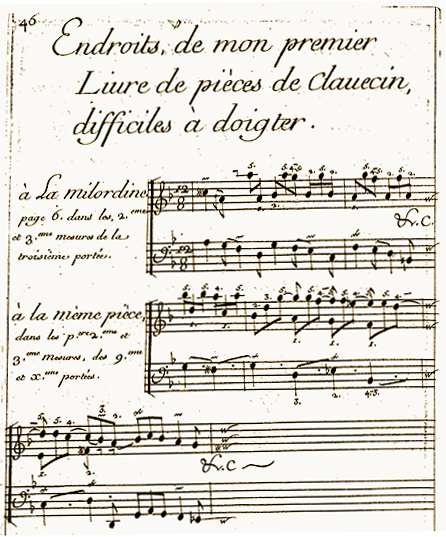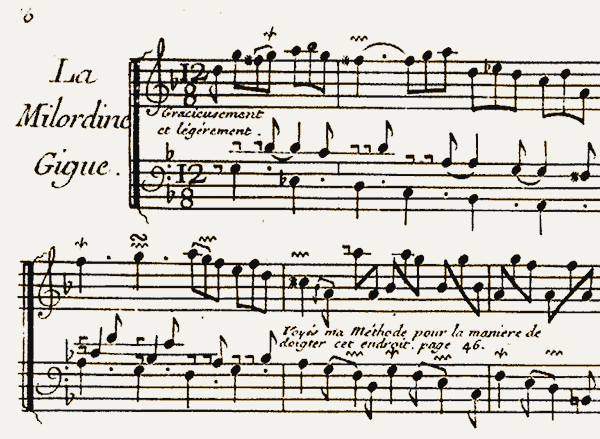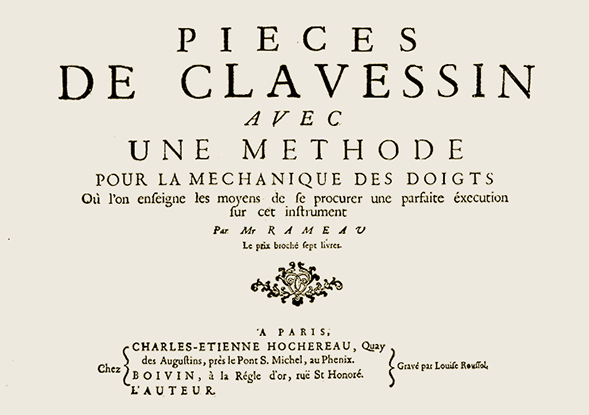In summer 1915 in the solitude of Pourville, the small seaside resort in Normandy, Claude Debussy finished his last major piano work, Douze Études pour le piano. To the 12 etudes in the printed edition that appeared the following year, he prefixed a somewhat curious comment in his inimitable style. The French original can be viewed in the Petrucci Library; here is the English translation:
A Few Words…
The present Études have no fingering – deliberately. Here, in brief, is the reason:
A predefined fingering cannot, obviously, suit all the many different shapes of hands. In modern editions this question is thought to be solved by superimposing several fingerings at once; this merely compounds the problem… The music then takes on the appearance of a strange undertaking that requires the fingers to proliferate by some inexplicable means…
Nor is the problem solved by the case of that precocious clavecinist Mozart who, being unable to strike all the notes of a chord, imagined he could take one of them with the tip of his nose. Was this perhaps merely the whim of an overly zealous compiler of fingering?
Our ancient masters – by which I mean in particular ‘our’ admirable clavecinists – never indicated any fingering, no doubt relying on the ingenuity of their contemporaries. It would be most improper to doubt this same capacity in modern virtuosi.
In sum, the absence of fingering is an excellent exercise: it suppresses the spirit of perversity that compels us to abandon the fingering of the composer and vindicates those words of eternal wisdom, ‘If you want something done well, do it yourself’.
Let us find our own fingerings!
C. D.
A clear statement, or so it seems – that is why we have received some critical comments regarding our Urtext edition of the Études since they contain fingering (clearly indicated as supplementary, of course), like all our piano editions. Why are we taking on something that the composer himself had quite deliberately evaded?
But we must take a somewhat closer look at the preface and the context in which it came about. The first question is how did it happen that Debussy advanced such a justification at all – there was after all no fingering in earlier piano cycles technically just as difficult, such as Estampes, Images or the Préludes. And in these he did not feel he had to make a disclaimer. Yet, in the case of the Études, literally just ‘exercise pieces’ in spite of their superb, artistic content, Debussy seems to have sensed a stronger expectation that the edition have fingering – owing perhaps to the tradition of the genre and doubtless also coming from his publisher Jacques Durand. This was all the more so as Debussy had a major prototype directly in mind: At the start of 1915 he had re-edited for Durand the etudes by Frédéric Chopin, which are copiously furnished with the composer’s original fingering.
So what to do? The ironic tone of voice in the introduction and his resort there to anecdotes and adages suggest that Debussy was more likely seeking an elegant way out of this, to him burdensome task, than that he was proposing a basic critique of the policy of adding fingering. The only solid argument seems to be his historical reference to ‘our ancient, admirable clavecinists’ – in so doing he invoked composers such as Jean-Philippe Rameau and especially François Couperin whom Debussy had initially considered as dedicatee of his Études (he opted ultimately, however, for Chopin). Was Debussy thus simply following a long French ‘anti-fingering’ tradition?
Yet, it is just Couperin who in this respect stabbed Debussy in the back: In his manual L’art de toucher le clavecin (Paris 1716), Couperin goes at length into the technical side of cembalo playing and in detail into questions of correct fingering, particularly in the section ‘Petite dissertation, sur la manière de doigter, pour paruenir a L’intelligence des agrémens qu’on ua trouuer.’ [‘Short treatise on methods of fingering for attaining an understanding of common ornamentation.’] In another part he exemplifies numerous difficult-to-play passages from his Pièces de clavecin … premier livre (Paris first edition, 1713) and specifies practical fingering for these:

Fr. Couperin, L’art de toucher le clavecin (1716), p. 46
We can see how important it obviously was to Couperin that precise attention be paid the fingering he offered there. Subsequently, he had an explicit reference inserted directly into the music text in a later issue of just that Premier livre: ‘Voyés [sic] ma Méthode pour la maniere de doigter cet endroit. page 46.’ [‘See my method, page 46, for the fingering of this passage.’]

Fr. Couperin, Pièces de clavecin … premier livre (1713), p. 6
Even in the case of Jean-Philippe Rameau’s Pièces de Clavessin (Paris, 1724), a glance at the title page already suffices to show that in it he was also paying attention to questions of playing technique. In a multi-page opening (‘De la mechanique des doigts sur le clavessin’ [‘On the mechanics of fingering at the clavecin’]) he treated in depth such topics as hand position, attack, correct finger position and its requisite fingering.

J.-P. Rameau, Pièces de Clavessin (1724), title page
Thus, the ‘old masters’ Debussy invoked definitely emphasized pedagogical exemplification and did not seem to have all that much confidence in the ‘competence of their contemporaries’…
Now, to give Debussy posthumous tutoring in music history is not by any means our point – we only have to be careful not to over-interpret his rather facetiously casual aperçu as a deep-rooted artistic credo and a virtual ‘final intention’. Incidentally, Debussy did indeed attend to the problem of suitable fingering for certain difficult passages, and several fingering solutions are also still to be found in the autograph draft of the Études. Even in the printed edition Debussy did not always follow his own preface, as in the 6th Étude ‘Pour les huit doigts’ [‘For the eight fingers’]. Debussy explained in a footnote the restriction to only eight fingers in which he thus also implicitly specified a fingering for the execution of the 4-note group: ‘In this etude, because of the continuously changing position of the hands, the use of the thumb is not convenient, and such an execution would become acrobatics.’

C. Debussy, Études, No. 6, m. 1–2
But it is more than understandable that Debussy, already seriously ill at that time, would direct his whole time and working power to composing and completing his last sonata projects and not to ‘secondary’ activities such as systematically fingering the Études. Extrapolating from this, that later editions likewise ought not include fingering suggestions seems to us, though, to be exaggerated piety. ‘Cherchons nos doigtés!’ [‘Let us find our own fingerings!’] – we have taken Debussy at his word and found ours: in our Urtext edition they are there only as a support, not as a prescription. You go ahead and find your own!

My dear friends.
How can one write an article of this nature whithout mentioning, or indeed discussing the greatest fingering of them all ……….Franz Liszt. Indeed I would purchase a book on discussion of his fingering alone. Respectfully, Kent
My main complaint is not the providing of fingerings, per se, but of the utilization of Herr HMT, whose fingerings of numerous editions in the past is at best, dubious.